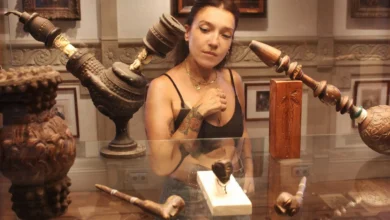The Importance Of Regular Mole Check: Safeguarding Your Skin Health
Regular mole check is an integral component of proactive healthcare in regions like Australia with intense sunlight exposure. Doctors at Sundoctors Australia highly advise having your moles examined for several compelling reasons. In this blog we’ll discuss their significance, what to expect at an appointment, and their contribution towards early detection and prevention of skin cancer.
nnnnRegular Mole Checks Are Vital
nnnnEarly Detection Saves Lives: Early detection is critical in successfully treating skin cancer. When detected early on, skin cancer is more likely to be curable with less invasive procedures. Mole checks help detect suspicious changes or the appearance of new moles for early intervention.
nnnnDoctors use mole checks to assess your risk for skin cancer based on factors like mole count and appearance as well as personal or family history of skin cancer. This assessment helps doctors decide the frequency and necessity of future checks as well as preventive measures.
nnnnMonitoring Changes: Moles may develop changes over time. Regular check-ups allow healthcare professionals to detect any variations, such as changes in size, color, shape or texture of moles. Any major shifts could indicate potential health concerns that require further assessment.
nnnnPeace of Mind: Regular mole checks provide peace of mind. Knowing you are being regularly screened for skin cancer reduces anxiety and allows you to feel secure about the health of your skin.
nnnnWhat to Expect at a Mole Check Appointment
nnnnAn appointment for mole checks typically involves an easy, noninvasive process. What you should expect:
nnnnConsultation: Your initial appointment with a dermatologist or trained medical professional will include an initial consultation where they will inquire into your medical history, sun exposure habits and any specific concerns that you may have.
nnnnSkin Examination: You will be asked to undress your undergarment, and your dermatologist will conduct a comprehensive skin exam on every part of your body, including areas that don’t typically come into direct sunlight like scalp hairs and the soles of your feet. Also included will be areas such as scalp hairs and the space between your toes where sunlight would typically shine directly on them.
nnnnDermoscopy: When moles or skin lesions appear suspicious during examination, a dermatologist may use a dermoscope – a handheld instrument which allows them to closely inspect patterns and colors of moles closely – in order to distinguish between benign moles and potentially cancerous ones.
nnnnBiopsy (if necessary): Your dermatologist may advise undergoing a biopsy to further assess any suspicious moles or lesions, whereby a small piece of tissue from these moles or lesions are extracted and sent off to a laboratory for testing to verify if skin cancer exists. This procedure helps detect whether skin cancer exists.
nnnnAdvice and Recommendations: Based on their examination findings, dermatologists will offer recommendations regarding sun protection, skincare products and follow-up appointments. In some instances, precancerous or cancerous moles or lesions may require removal – so advice from a dermatologist is key.
nnnnCheck Your Mole Count Often
nnnnFrequency of Mole Checks will depend on several factors, including your risk profile, number of moles you have and family and personal history of skin cancer. Here are some general guidelines:
nnnnLow Risk: If you are at low risk, with few moles and no personal history or family history of skin cancer, and no history of melanomas in either your immediate family or yourself, mole checks every one or two years could be wise.
nnnnModerate Risk: People at moderate risk could have multiple moles or have had family history of skin cancer; as such, annual mole checks are recommended.
nnnnHigh Risk: Individuals at high-risk may include those who have multiple moles, have had prior skin cancer issues or family histories of melanomas. Mole checks should take place every three to six months in this population.
nnnnPost-Treatment Monitoring: After receiving treatment for skin cancer, your physician will suggest an individualized monitoring schedule tailored specifically to you and your case.
nnnnPreventing Skin Cancer
nnnnThere are various measures you can take to lower your risk of skin cancer beyond regular mole checks:
nnnnSun Protection: Protect yourself from harmful UV radiation by wearing sunscreen with at least an SPF 30 factor and seeking shade during peak sun hours, and wearing protective clothing such as hats and sunglasses.
nnnnRegular Self-Examinations: For optimal skin health, perform monthly self-exams of your skin to assess any changes to moles, new growths or unusual skin developments. If any concerning changes arise, seek medical assistance immediately.
nnnnAvoid Tanning Beds: Tanning beds emit harmful UV radiation and should be avoided entirely as a safer alternative. Try sunless tanning products or spray tans instead for more reliable tanning results.
nnnnHydrate Regularly: Hydration can keep your skin supple and reduce its susceptibility to UV radiation damage.
nnnnConclusion
nnnnRegular mole checks are an essential component of proactive skin health. These examinations offer early detection, risk evaluation and peace of mind. By prioritizing regular mole checks and being vigilant about mole changes while practicing sun-safe behaviors you can take proactive measures to safeguard both your skin and overall well being. Investing in its care means investing in yourself. Your skin is your body’s largest organ; take good care in caring for it now for optimal long-term wellbeing.
n


